Simple Machines - Definition, Examples, Quiz, FAQ, Trivia
Discover how these basic tools make work easier for everyone!
What are Simple Machines?
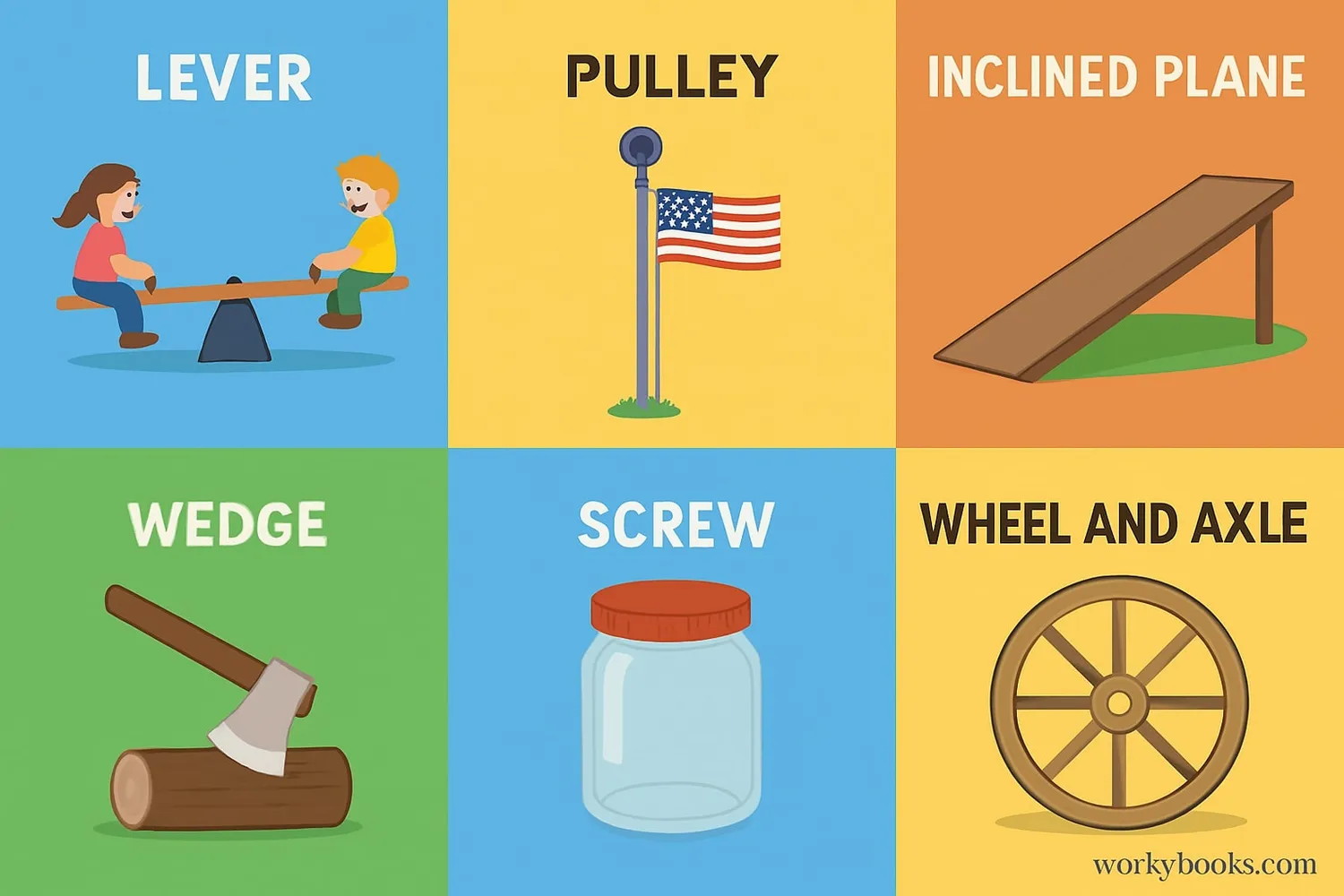
Simple machines are basic tools that help us do work with less effort. They have few or no moving parts and change the direction or amount of force needed to move objects. There are six types of simple machines: lever, pulley, inclined plane, wedge, screw, and wheel and axle.
Think of simple machines as your helpers in everyday life. They make it easier to lift heavy things, move objects, cut materials, or hold things together. Without realizing it, you use simple machines every day - when you open a door, ride a bike, or even cut your food!
Science Fact!
All complex machines are made by combining simple machines! A bicycle uses wheels and axles, levers (brakes), and screws.
Types of Simple Machines
Levers
A lever is a bar that pivots on a fixed point called a fulcrum. Levers help lift heavy objects with less force. There are three classes of levers based on the positions of the effort, load, and fulcrum.
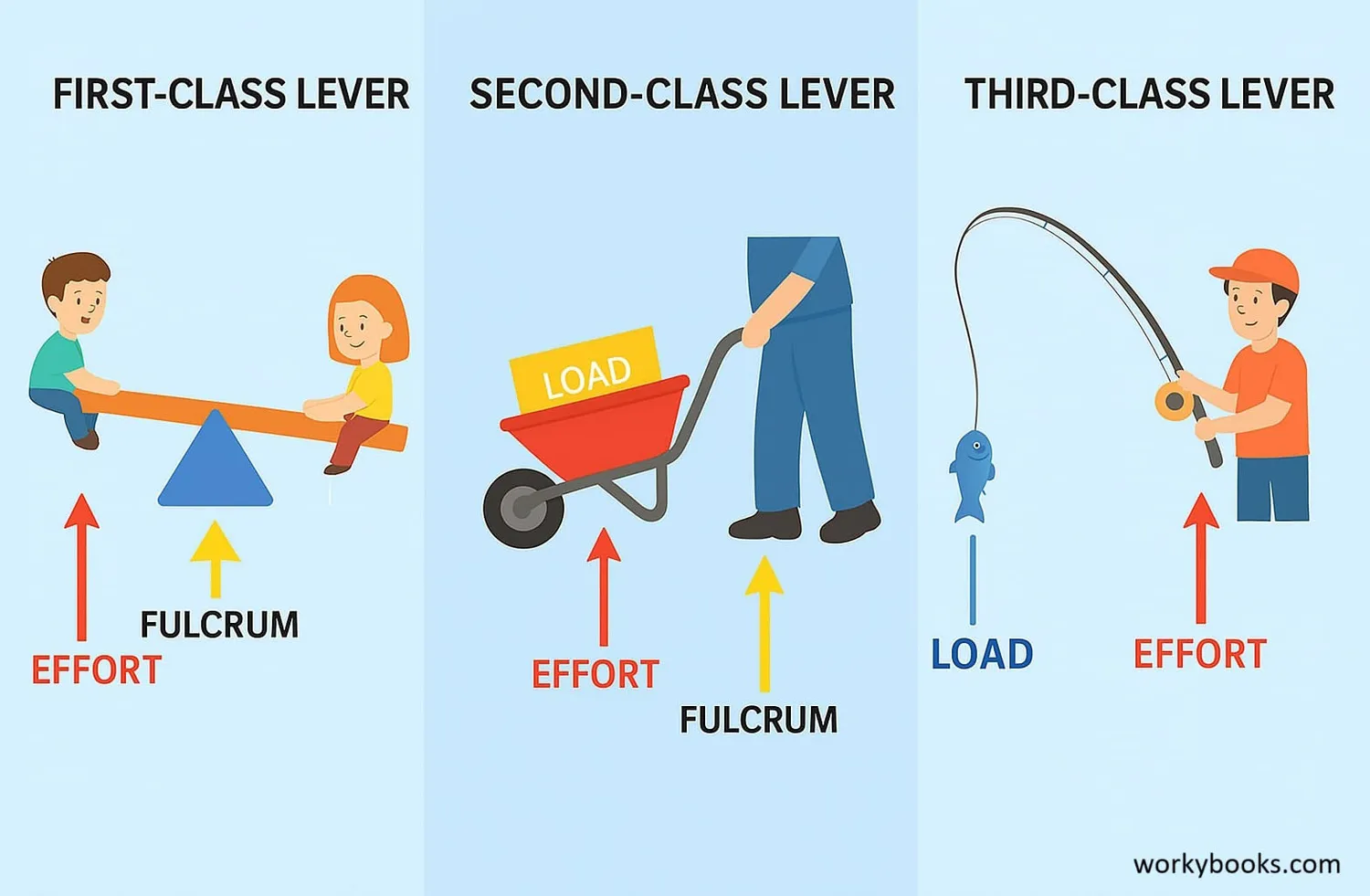
First-Class Lever
Fulcrum between effort and load
Example: See-saw, scissors
Second-Class Lever
Load between fulcrum and effort
Example: Wheelbarrow, nutcracker
Third-Class Lever
Effort between fulcrum and load
Example: Fishing rod, tweezers
Wheel and Axle
A wheel and axle consists of a wheel attached to a smaller rod called an axle. When you turn the wheel, the axle turns with it, allowing you to move heavy objects with less effort.
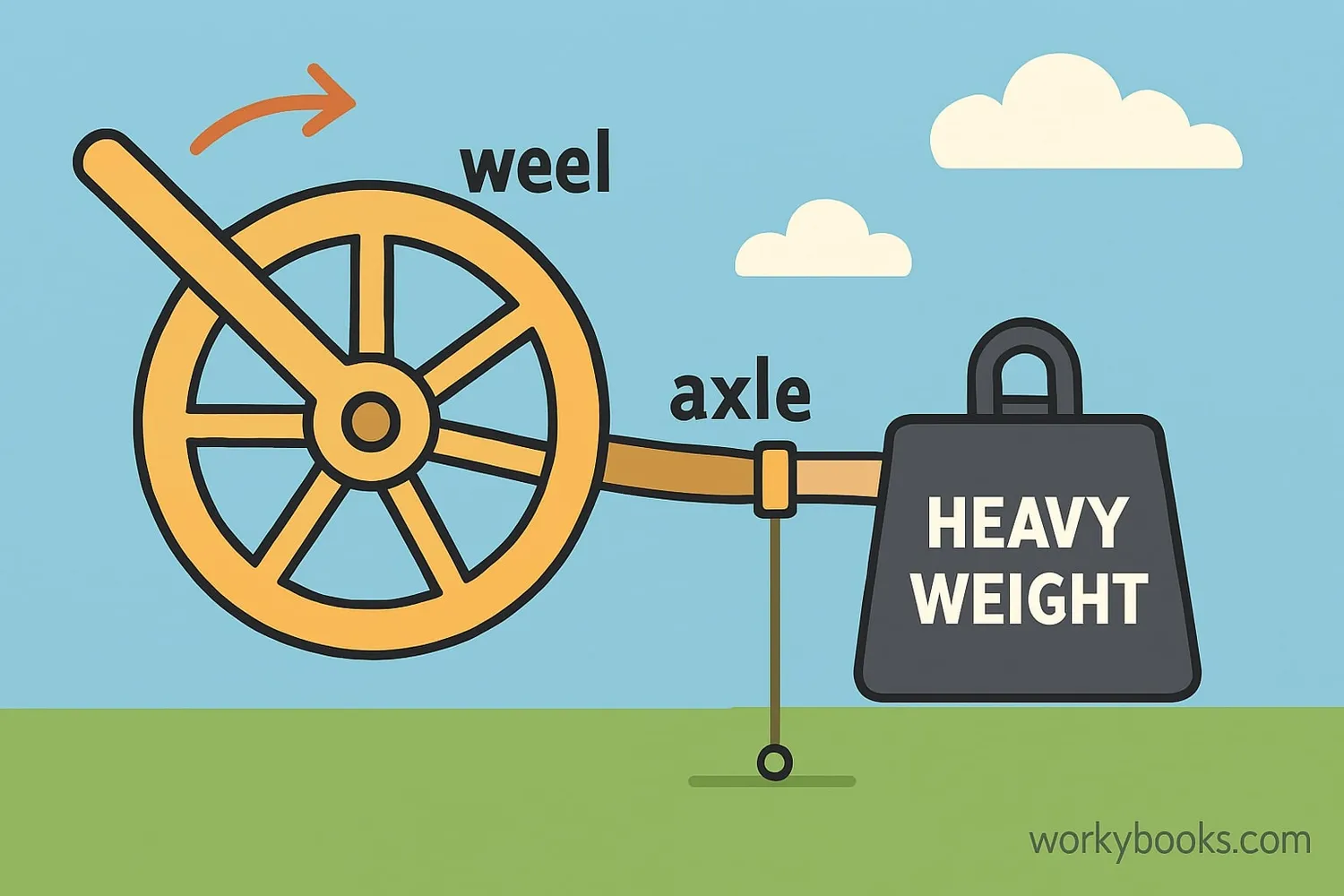
Door Knob
The knob is the wheel that turns the axle (latch mechanism)
Car Steering Wheel
The large wheel turns the small axle connected to wheels
Water Wheel
Moving water turns the wheel which turns the axle to grind grain
Pulleys
A pulley is a wheel with a groove for a rope or cable. Pulleys change the direction of force and can multiply the force applied. Multiple pulleys can be combined to form compound pulley systems.
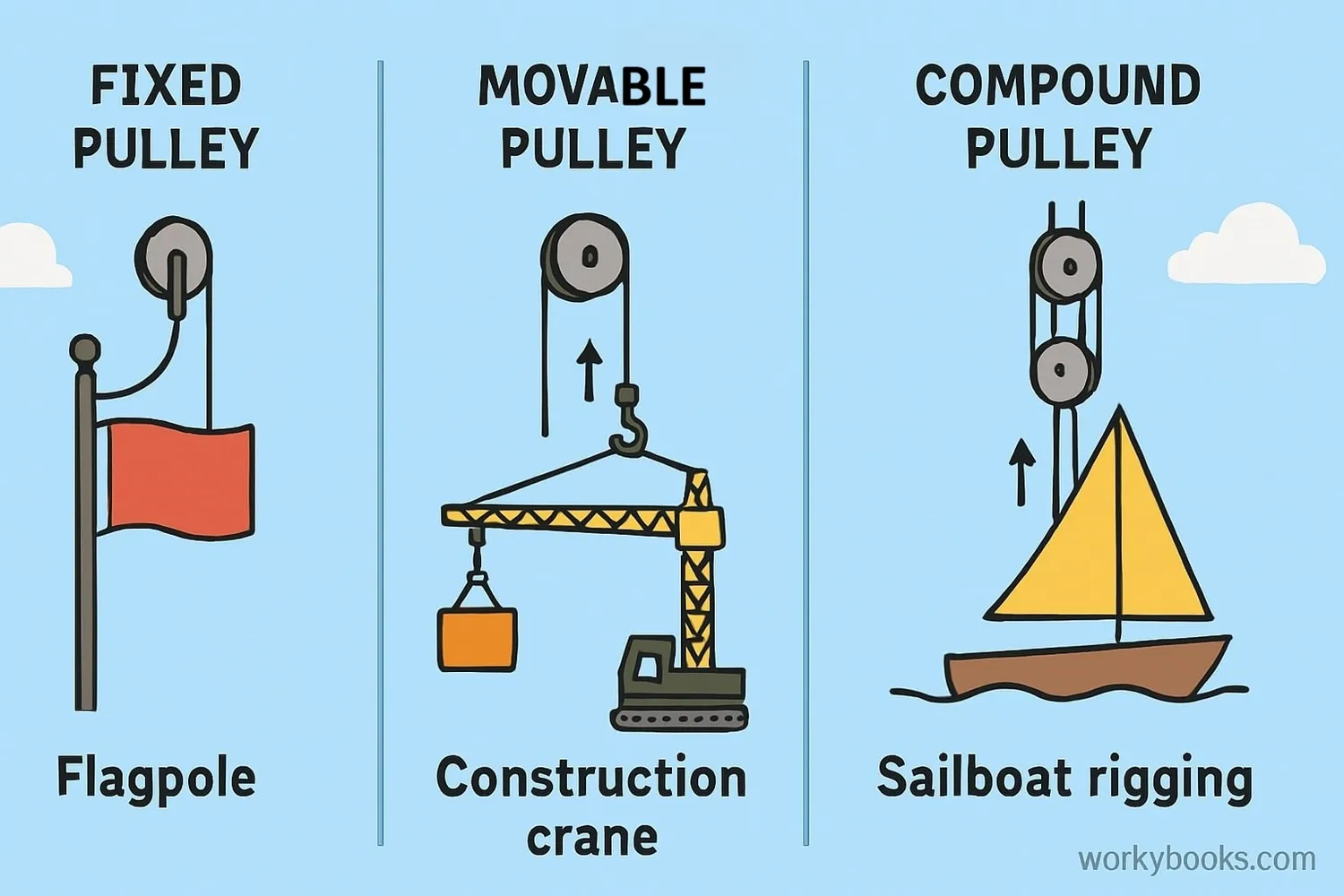
Fixed Pulley
Changes direction of force
Example: Flagpole, blinds
Movable Pulley
Multiplies applied force
Example: Construction crane
Compound Pulley
Combines fixed and movable pulleys
Example: Sailboat rigging
Inclined Planes
An inclined plane is a sloping surface that reduces the force needed to lift objects by increasing the distance over which the force is applied. The longer the ramp, the less force needed.
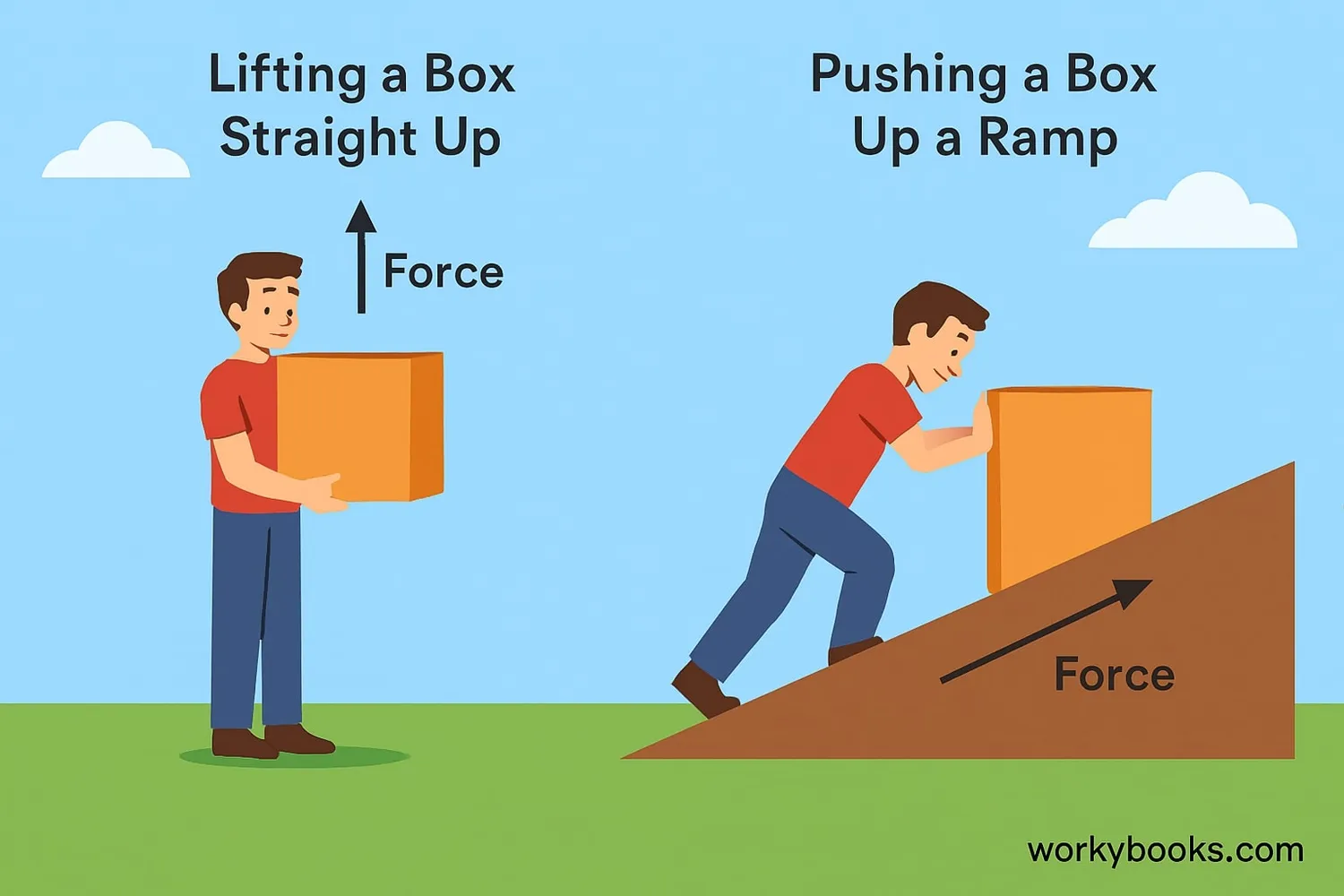
Ramps
Loading trucks, wheelchair access
Stairs
Gradual way to change elevation
Slide
Uses gravity to move down an incline
Wedges
A wedge is two inclined planes joined back-to-back. Wedges are used to split, cut, or hold objects in place by converting downward force into sideways force.
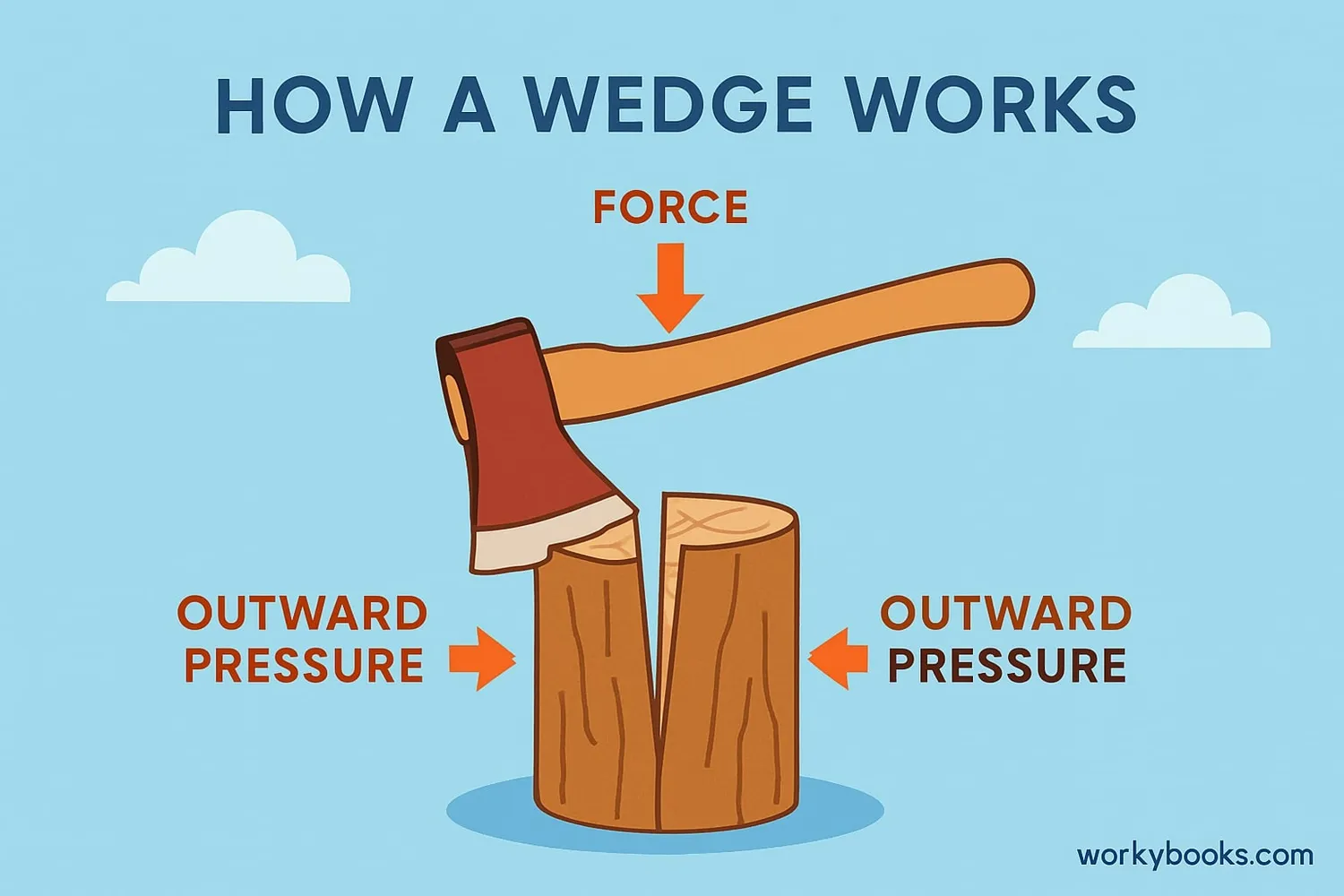
Knives & Axes
Cutting and splitting materials
Doorstops
Holds doors open with friction
Nails
Pointed end separates materials
Screws
A screw is an inclined plane wrapped around a cylinder. Screws convert rotational force into linear force, making them excellent for holding things together or lifting objects.
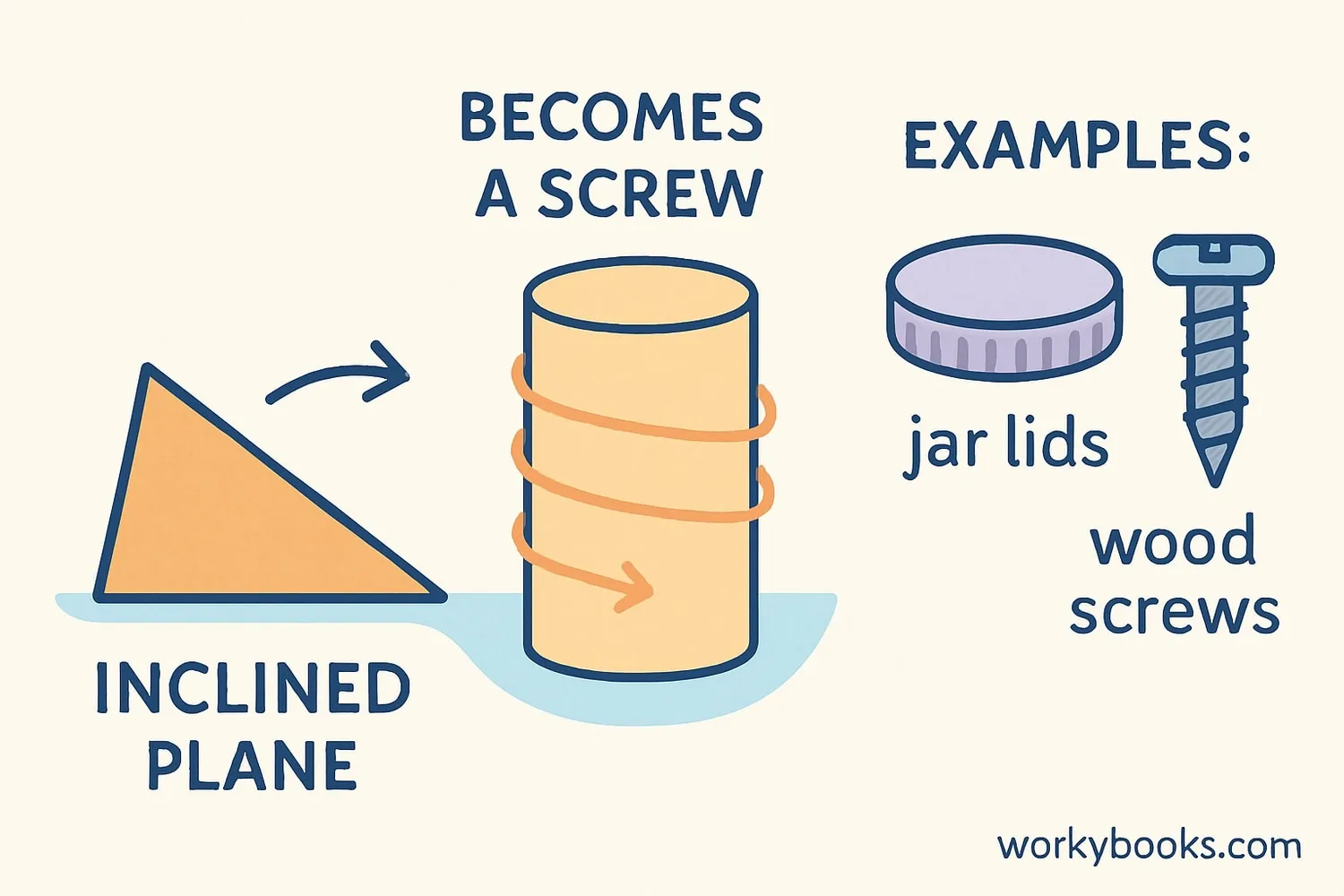
Jar Lids
Create tight seals with twisting motion
Wood Screws
Hold materials together with great strength
Light Bulbs
Screw bases create electrical connections
How Simple Machines Work
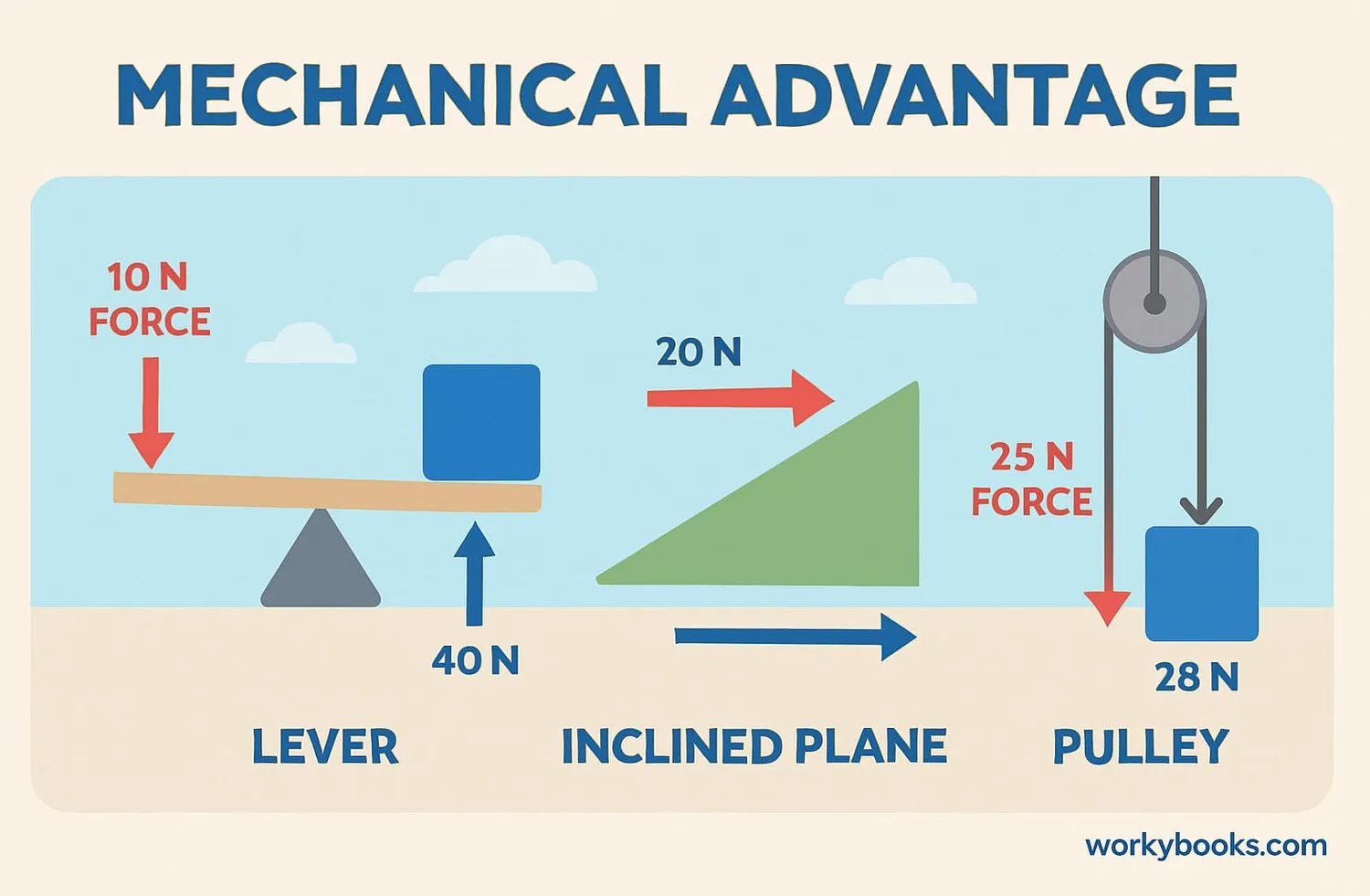
Simple machines make work easier by changing the amount of force needed, the direction of force, or the distance over which force is applied. This concept is called mechanical advantage.
Mechanical Advantage Formula:
Mechanical Advantage = Output Force ÷ Input Force
Or
Mechanical Advantage = Input Distance ÷ Output Distance
For example, using a ramp (inclined plane) that's 10 feet long to lift a box 2 feet high gives a mechanical advantage of 5 (10 ÷ 2). This means you only need one-fifth the force to lift the box compared to lifting it straight up.
Combined Power!
Complex machines combine multiple simple machines. A car uses wheels and axles, levers (brakes), screws (engine parts), and inclined planes (windshield).
Simple Machines Quiz
Test your knowledge about simple machines with this fun quiz! Answer all 5 questions to see how much you've learned.
Frequently Asked Questions
Here are answers to some common questions about simple machines:
Fun Simple Machines Trivia
Discover some amazing facts about simple machines!
Ancient Origins
The earliest known simple machines date back to ancient Mesopotamia around 3500 BCE. The wheel and axle was first used for pottery before being adapted for transportation.
Space Machines
NASA's Mars rovers use sophisticated versions of simple machines. Their wheels and axles navigate rough terrain, while robotic arms function as compound levers to collect samples.
World Records
The world's largest pulley system was created in 2014 to lift a 700-ton bridge section. It used 128 pulleys and could lift the equivalent of 140 elephants!
Nature's Machines
Simple machines exist in nature too! Your jaw works as a lever, beaver teeth function as wedges, and DNA's double helix is shaped like a screw. Even plants use capillary action that works like miniature pumps.





